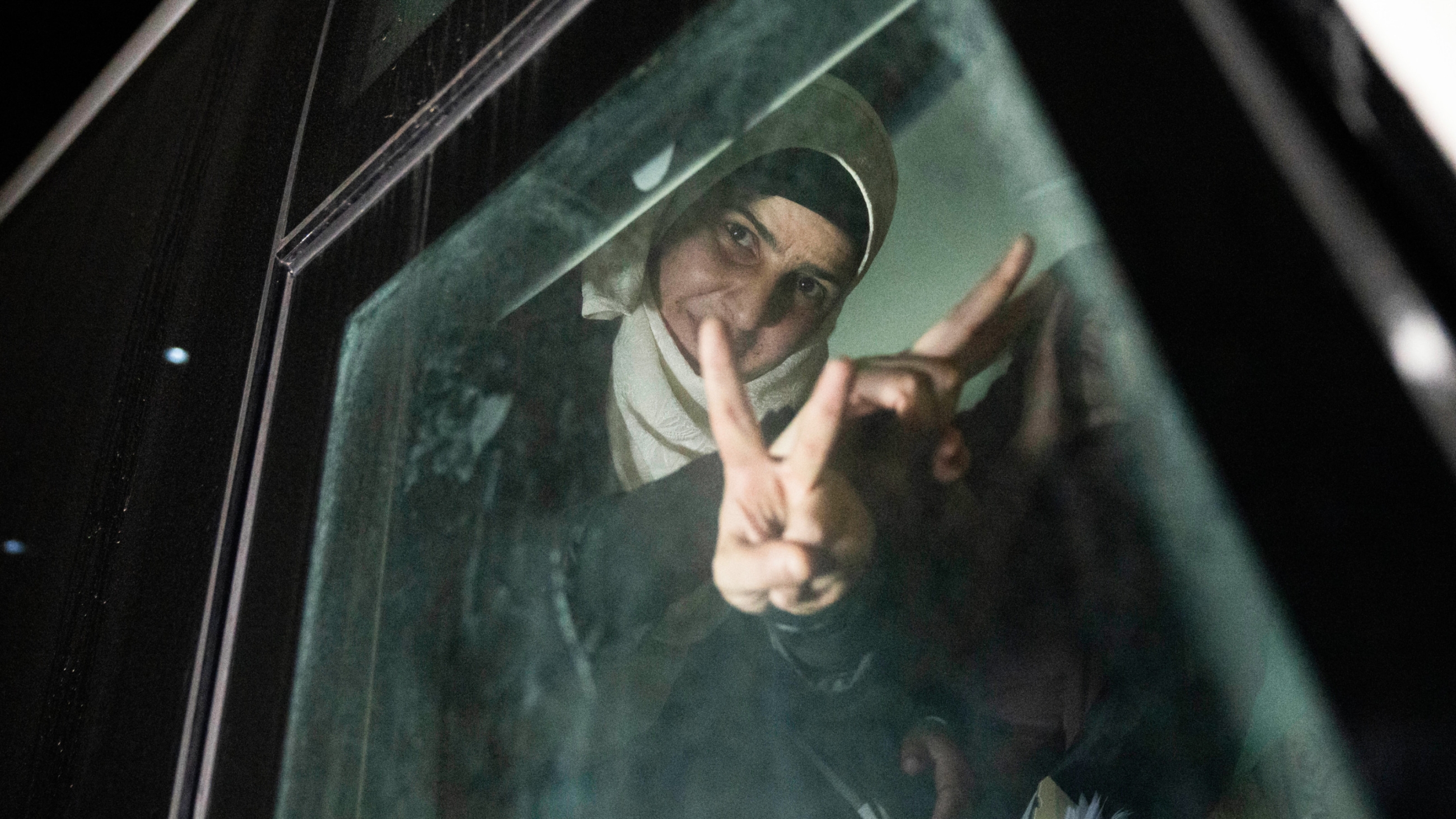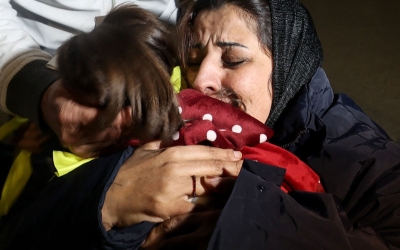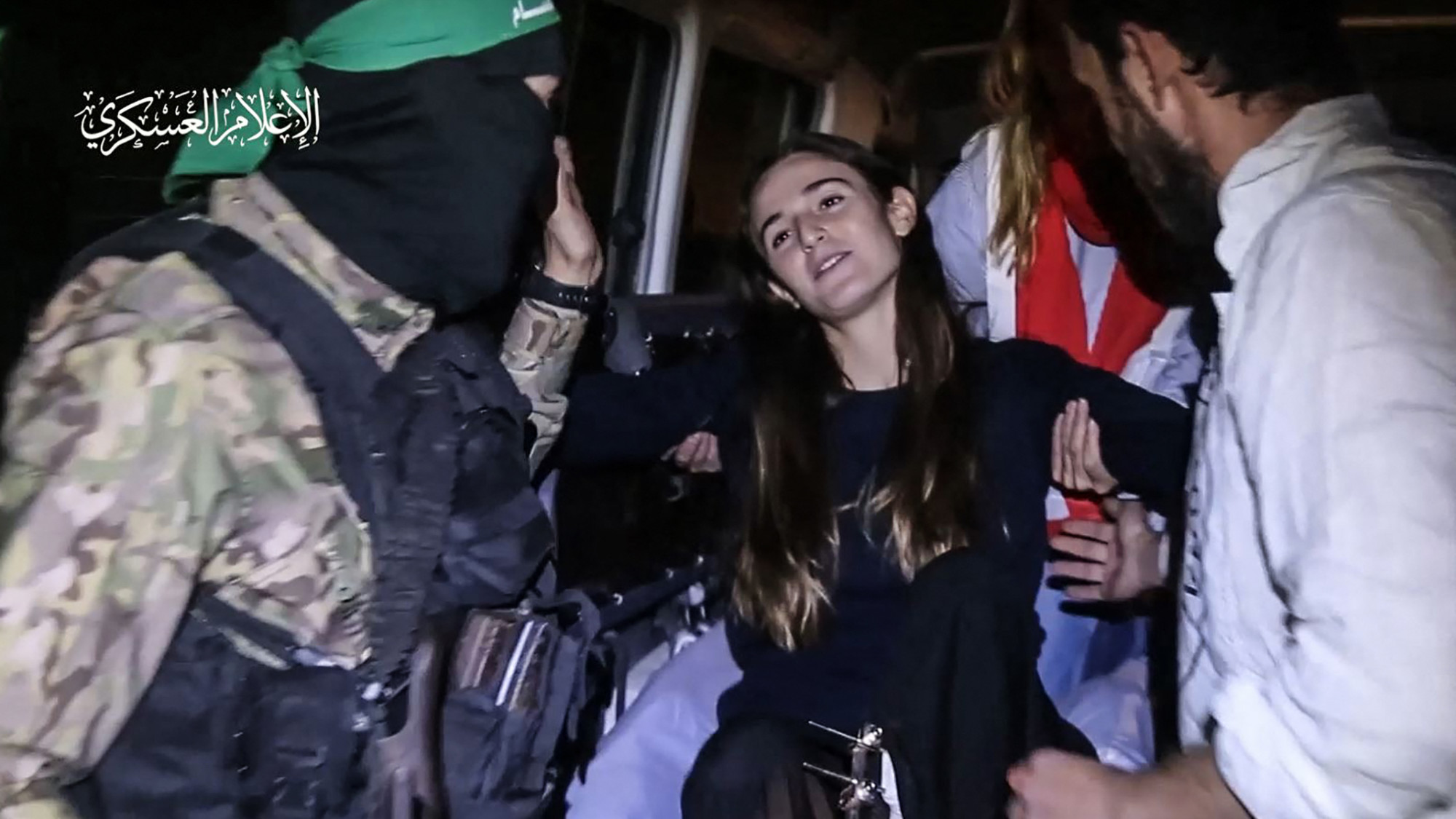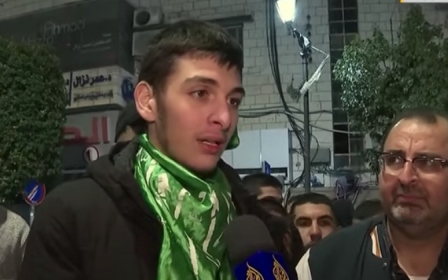Israel-Hamas prisoner exchanges: How many more will be released?

Last week, after weeks of relentless bombing in Gaza, Israel agreed to temporarily pause its assault after negotiating a truce with Hamas through mediators in Qatar and Egypt.
Though its agreement with Hamas included the cessation of hostilities and the entry of a limited quantity of aid into Gaza, the deal hinged on one key factor: the exchange of prisoners.
Initially, the two parties agreed to a four-day pause subject to an extension for up to 10 days, according to the Israeli government.
In the first four days, Hamas was to release 50 Israeli women and children it holds in Gaza in exchange for 150 Palestinian women and children imprisoned by Israel.
The agreement could be extended for an additional day for each 10 Israelis Hamas releases from Gaza, who in turn would be exchanged for 30 Palestinians held in Israel.
New MEE newsletter: Jerusalem Dispatch
Sign up to get the latest insights and analysis on Israel-Palestine, alongside Turkey Unpacked and other MEE newsletters
However, the outline of the deal limited the potential swaps to civilian women and children on both sides who are still alive.
Thus, the maximum number of days was capped at 10, because it is believed a maximum of 100 Israeli women and children are held by Palestinians in Gaza.
This caveat was important for many Israeli politicians who have repeatedly said the bombardment of Gaza must resume as soon as the truce is over.
Follow Middle East Eye's live coverage for the latest on the Israel-Palestine war
Barring limited skirmishes and minor Israeli violations, the first four days of the truce went relatively according to plan, and so it was extended for an additional two days and then a further day on Thursday.
Talks are ongoing to extend the truce further, to allow all non-combatant women and children held in Gaza to be released within the 10-day period.
But as the truce continues to hold, important questions are starting to arise.
Will there be another deal to release other categories of prisoners held in Gaza and Israel? What will the price be on each side? And could it lead to a lasting ceasefire?
Other categories
Israel was holding around 5,300 Palestinians before the conflict began. Since 7 October, Israeli forces have detained over 3,300 additional people from the occupied West Bank, East Jerusalem and from within Israeli territory. Hundreds more were detained in Gaza.
Some have been released after a brief interrogation or detention. The exact figure of how many remain in custody is unclear, especially as Israeli forces continue to arrest dozens of people daily.
Gaza-based Palestinian armed groups took at least 240 people captive during the 7 October attack on southern Israel, according to Israeli estimates.
Hamas, which holds the vast majority of them, has not provided an exact number of how many it holds, but estimated there are up to 250 held by various factions and individuals.
The group said at least 60 have been killed in Israeli air strikes along with their guards, but provided no further details or evidence.
So far, 102 captives have been released. They include 74 Israeli women and children freed as part of the deal, including those with dual nationality, and 24 foreigners and elderly Israeli women freed by Hamas without conditions in what the group said was a gesture of goodwill.
If all civilian women, children and foreign nationals are released during potential extensions of the current truce, an estimated 110-120 Israelis will remain in Gaza. Almost all of them are men, except for a few female soldiers.
Early on in the war, Hamas said it was willing to release all of its captives, including active-duty soldiers - estimated to be between 20 and 30 in total - in exchange for the release of all Palestinian prisoners.
The group said it was open to engaging in one “all-for-all” swap deal or breaking it down into several smaller exchanges.
“We have female prisoners, and the occupation has female prisoners. We have civilians, sick and elderly, and the occupation holds people of the same category. We have soldiers and the occupation has some fighters and combatants,” Abu Ubaida, spokesperson for Hamas's armed wing, said last month.
With all women and children possibly released by the end of the week, the focus is on what will happen to the others.
Qatar hosted the spy chiefs of Israel and the US this week, in a meeting that also included Egyptian officials, to discuss the “possible parameters of a new phase of the truce deal” and a potential permanent ceasefire, Reuters reported.
According to Washington Post columnist David Ignatius, the negotiators agreed on five categories of Israeli prisoners for future exchanges.
Citing a source "close to the negotiations", Ignatius said the categories are: "men too old for reserve military duty, female soldiers, male reservists, active-duty male soldiers, and the bodies of Israelis who died before or during captivity".
Those suggested categories are similar to those previously outlined by Hamas.
The group had labelled the women and children swaps as based on "humanitarian” grounds and suggested discussions over the release of soldiers would take place under a different framework.
Leaders of the group hinted that such talks would have to come after agreement on a permanent ceasefire and possibly the easing of the siege on Gaza.
Stopping the war at this stage, for whatever purpose, will not be welcomed by Israel’s far-right parties, whose dissent threatens the stability of the government.
Itamar Ben Gvir, national security minister and leader of the Jewish Power party, threatened on Tuesday that taking such a step would mean “breaking apart the government”.
Bezalel Smotrich, finance minister and leader of the Religious Zionism party, echoed Ben Gvir’s warning against widening the current truce.
“This is a plan to eliminate the State of Israel. We continue until absolute victory, God willing, and the destruction of the Nazis of Hamas,” he said.
Another contentious matter in Israel is the release of Palestinians sentenced for the killing of Israelis in acts Palestinians consider to be part of their armed struggle against the occupation.
The greenlighting of such a move would likely face some pushback domestically.
During the 2011 prisoner exchange, Israel released 1,027 Palestinians in return for one Israeli soldier held by Hamas.
Chief among those released was Yahywa Sinwar, the movement's head in Gaza and Israel’s public enemy number one.
Possible scenarios
According to Ismat Mansour, an expert in Palestine-Israel affairs, an extension of the current deal is possible, but it’s unlikely to bring about an end to the war.
“Israel is adamant on killing and we have seen [Prime Minister Benjamin Netanyahu] and other officials say their goals are yet to be fulfilled,” Mansour told Middle East Eye.
The Ramallah-based analyst predicted one of the following scenarios.
'We have seen [Netanyahu] and other officials say their goals are yet to be fulfilled'
- Ismat Mansour, Palestinian analyst
He said Israel could resume its bombing of Gaza for a long time to exert more pressure on Hamas.
If unsuccessful, this could mean a return to similar short-term deals to facilitate other limited prisoner swaps.
If successful, Hamas could be forced to come to the table and settle for Israeli terms.
An unlikely possibility, he added, is that Israel manages to recover some of the captives during military operations.
However, Mansour said a major swap including all prisoners is still on the table, but the price paid “will be very significant”.
It would take Hamas a lot of “perseverance and steadfastness” to achieve this goal, he added.
Future deals could even go beyond prisoner exchanges, he explained. They may include political discussions about the future of security, governance and the blockade of Gaza.
Middle East Eye delivers independent and unrivalled coverage and analysis of the Middle East, North Africa and beyond. To learn more about republishing this content and the associated fees, please fill out this form. More about MEE can be found here.







